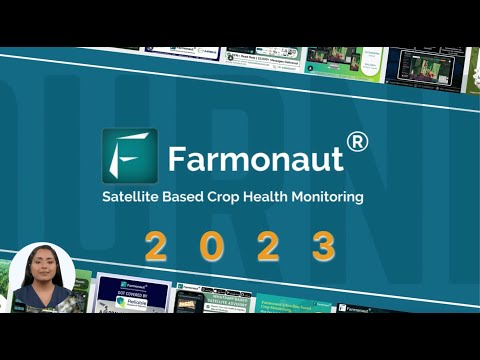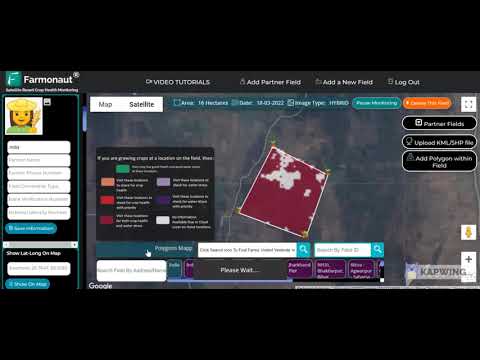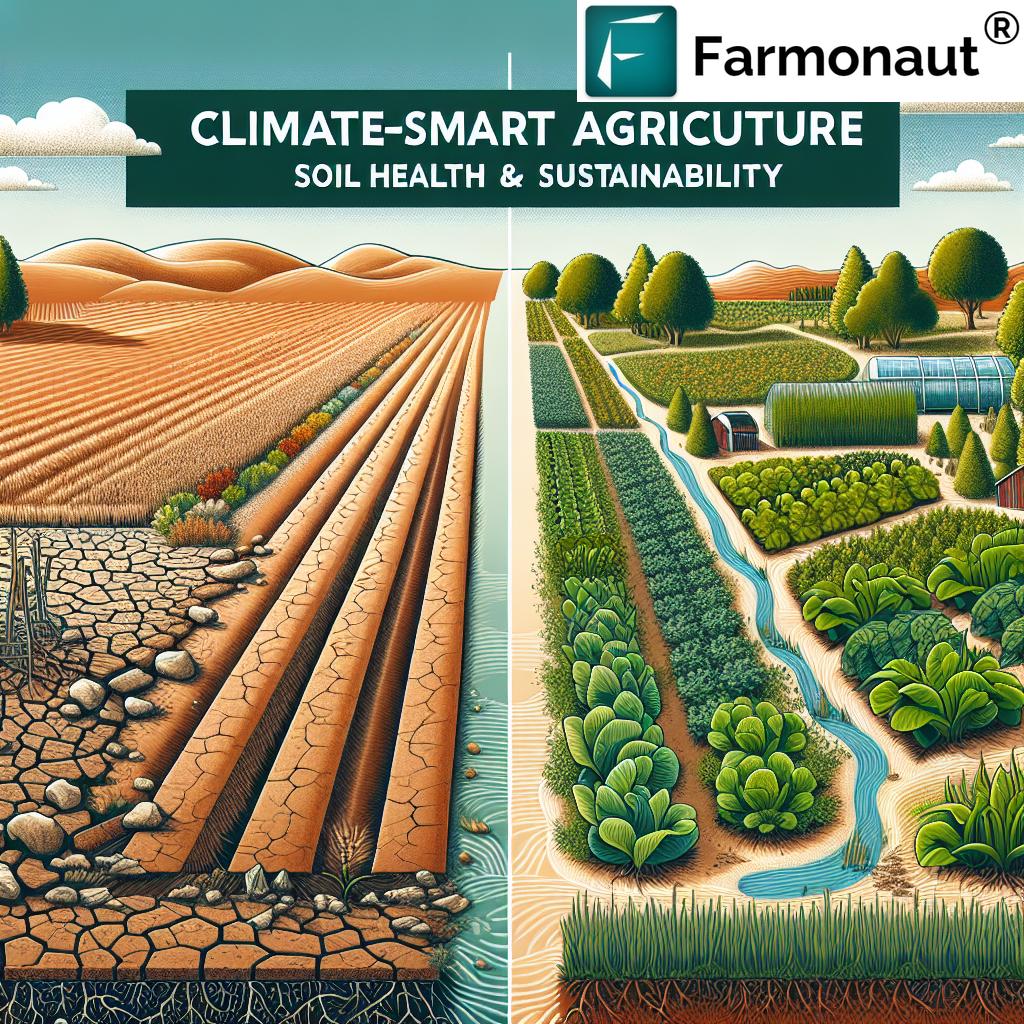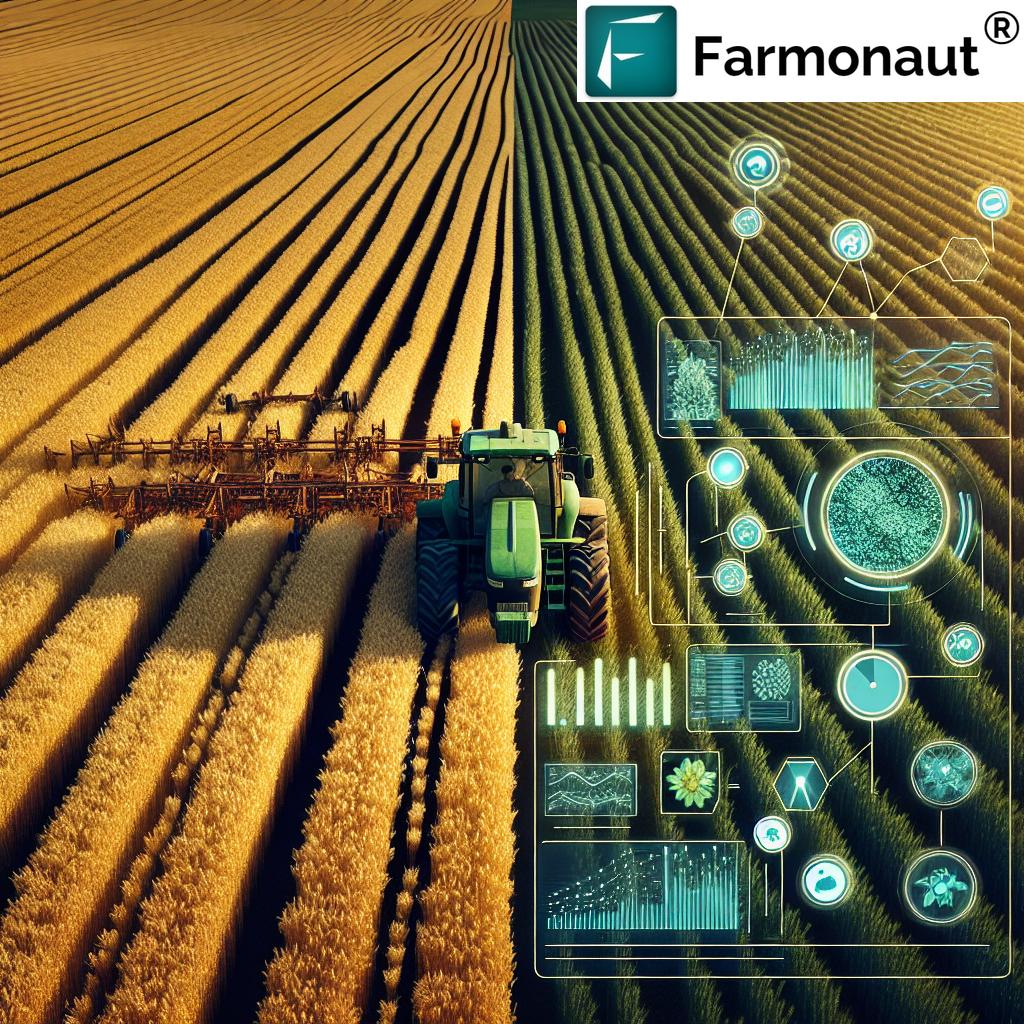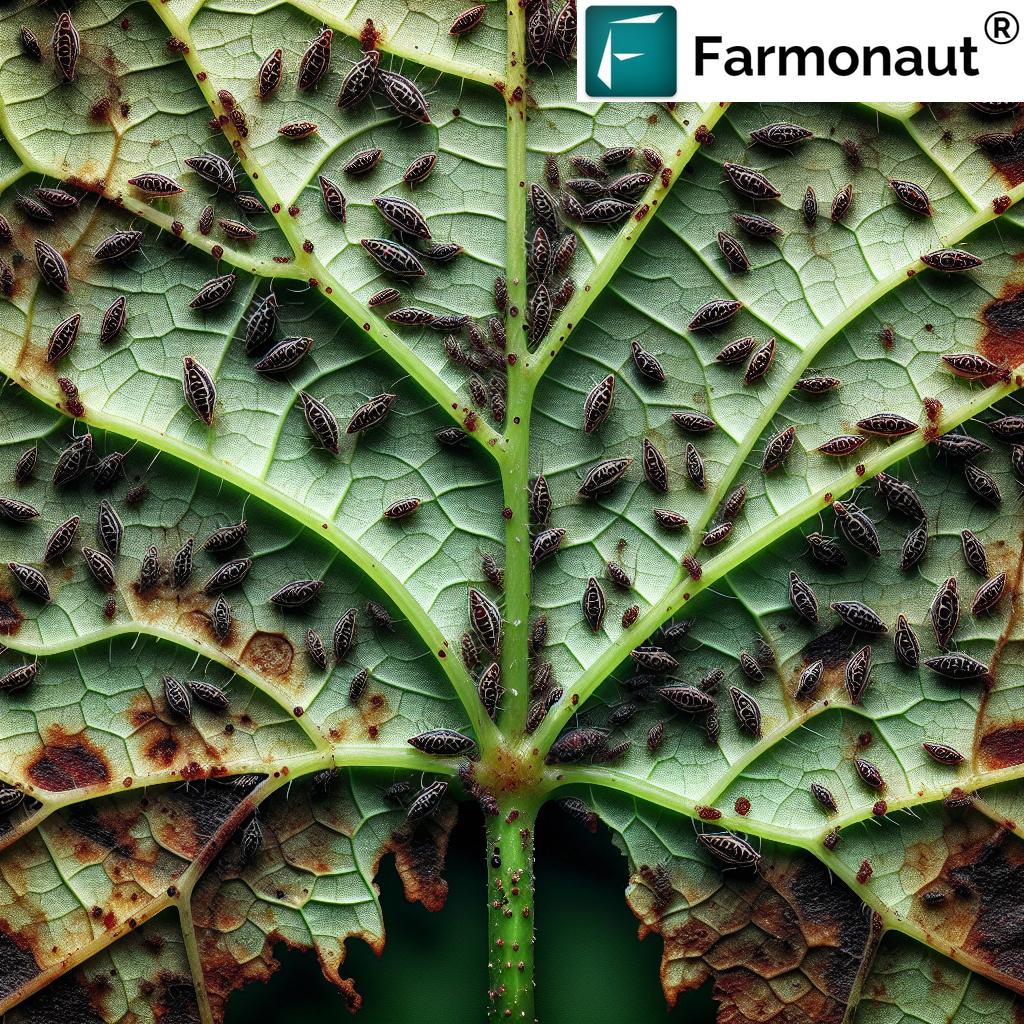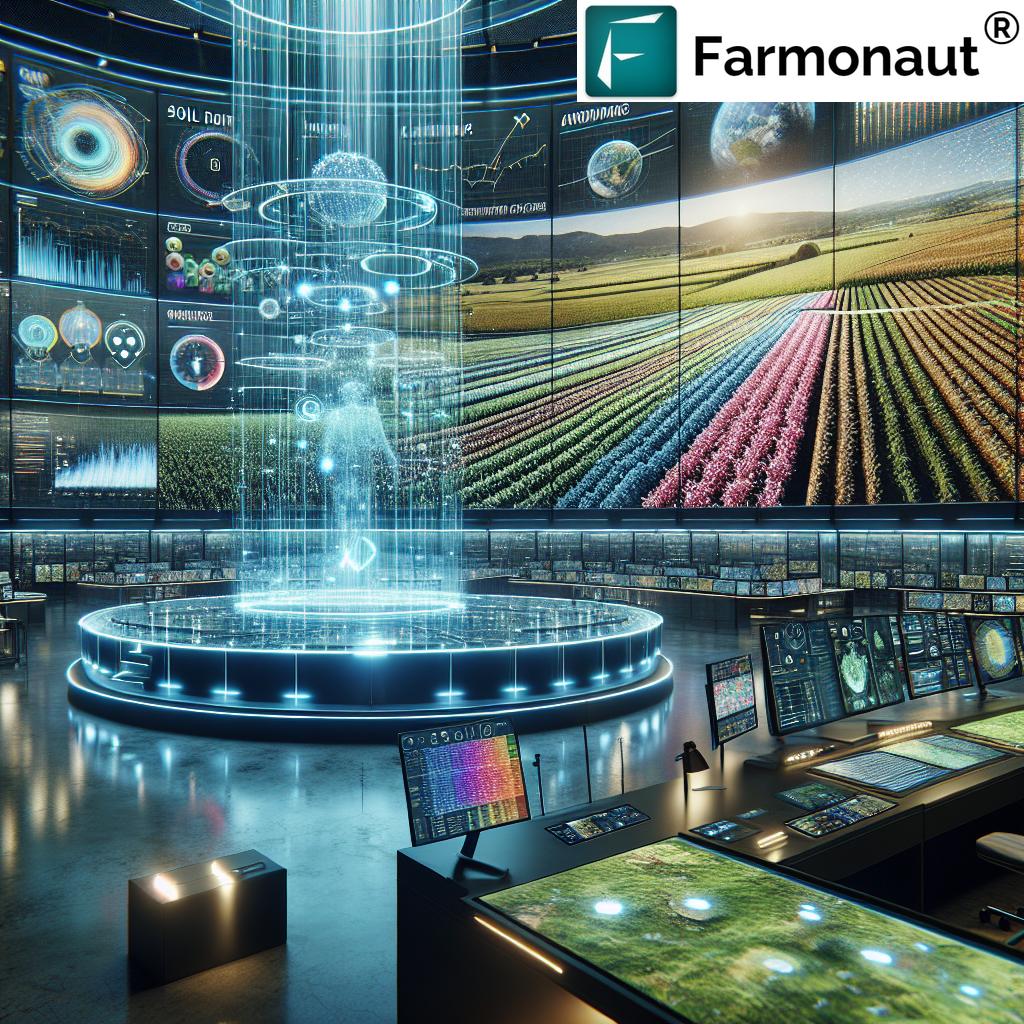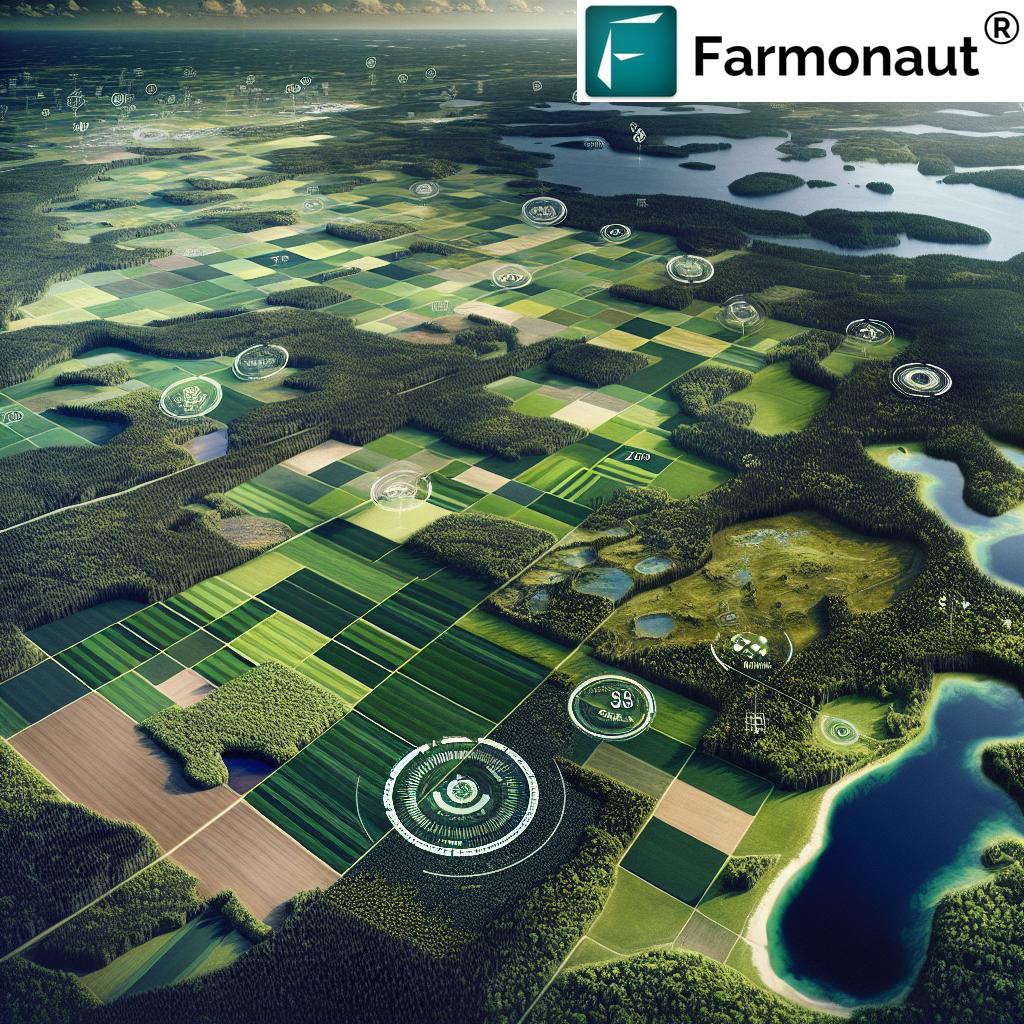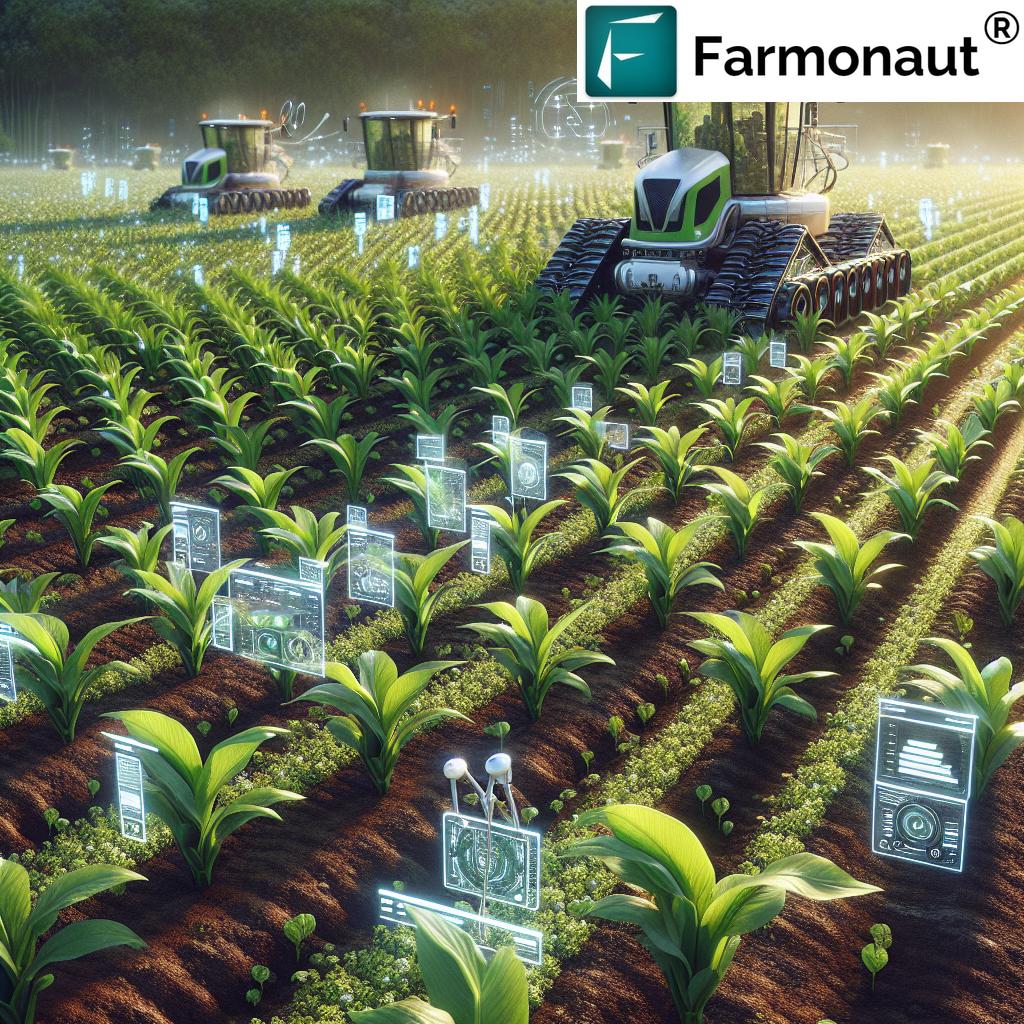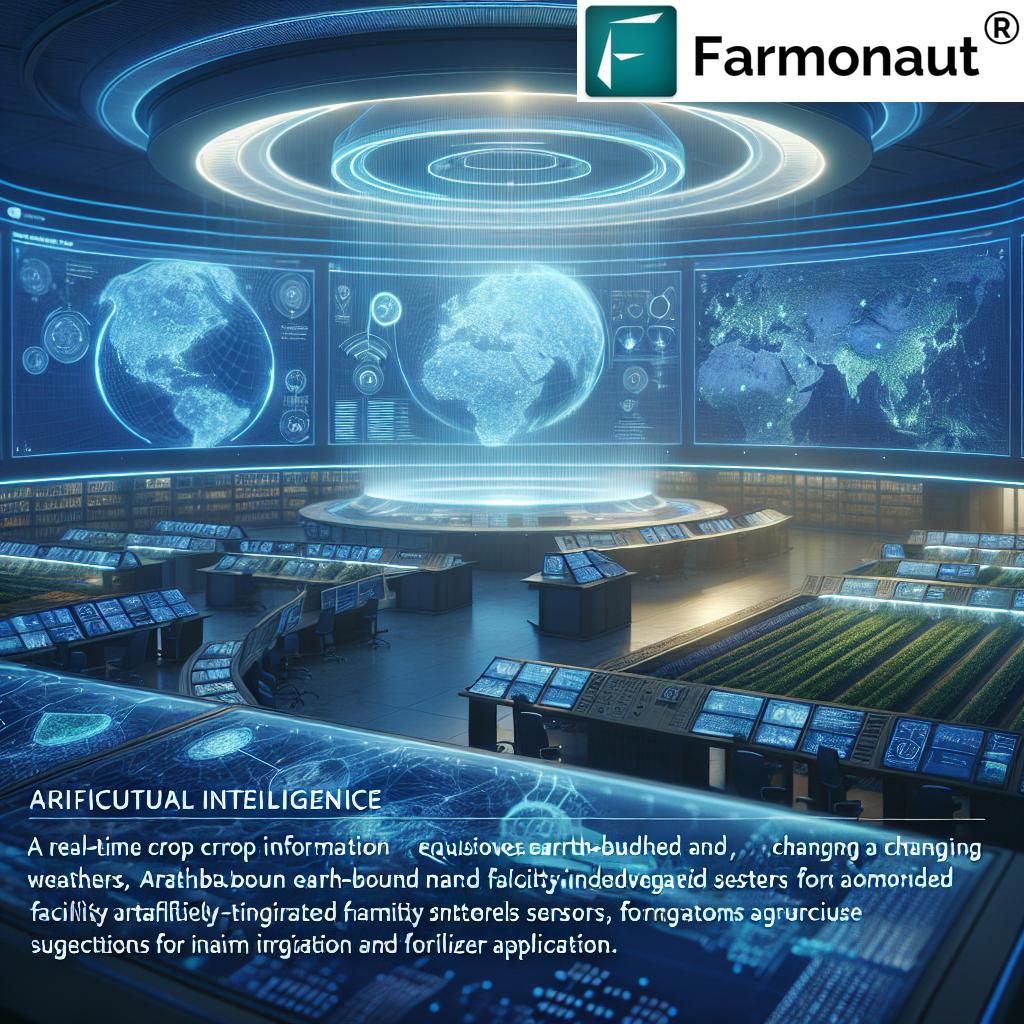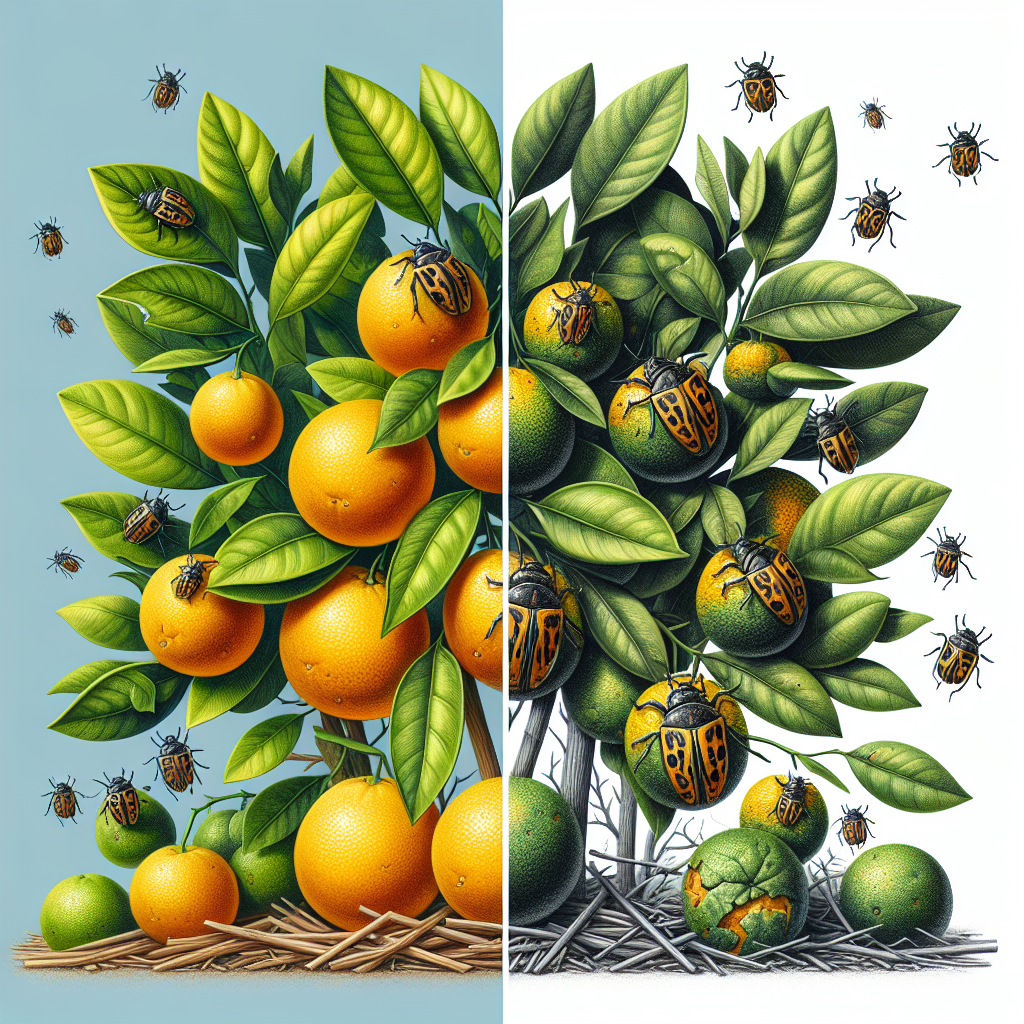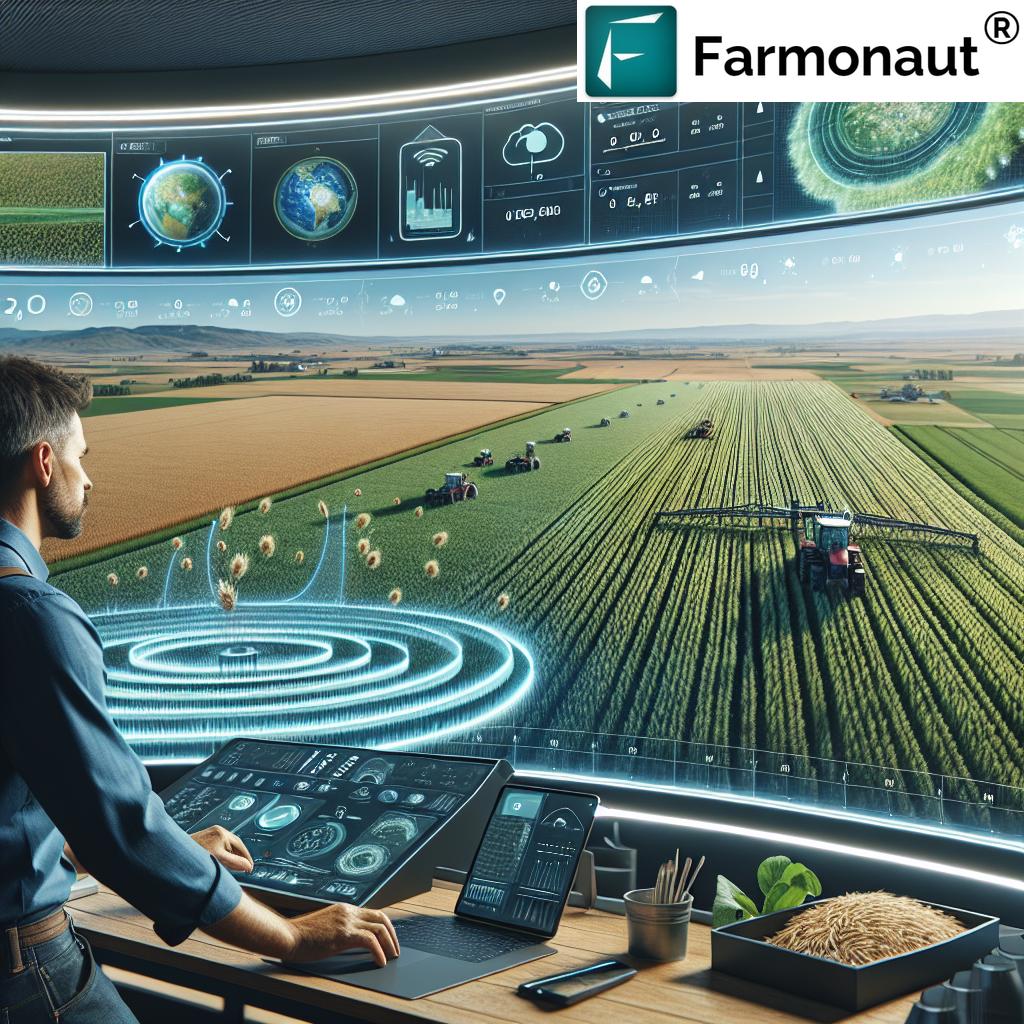7 Sustainable Spray Solution Hacks Revolutionizing Farming: Eco-Friendly Innovation for Agriculture & Forestry
“Precision spraying can reduce chemical usage in farming by up to 90%, significantly lowering environmental impact.”
Introduction: Why Sustainable Spray Solutions Matter
In modern agriculture and forestry, sustainable spray solutions have become the cornerstone for promoting healthy crops, ecological balance, and efficient resource management. Traditional spraying methods frequently led to problems such as the overuse of pesticides and fertilizers, environmental contamination, and a devastating loss of biodiversity. Recognizing these challenges, our industry is rapidly embracing innovative technologies and scientific advancements. These powerful approaches – from precision spraying technology and drones to IoT-driven spraying systems and eco-friendly spray formulations – are paving the way toward cleaner, more efficient, and sustainable agriculture.
As we delve into these seven revolutionary spray solution hacks, we’ll uncover how each approach is shaping a greener future while reducing chemical usage, minimizing waste, and protecting both crops and the environment. Whether we’re seeking higher yields, healthier soils, or better water management, these practices unite us in our mission to nurture agriculture and forestry sustainably.
1. Precision Spraying Technology: The Future of Chemical Application
The adoption of precision spraying technology represents a quantum leap in sustainable spray solutions. Precision spraying integrates cutting-edge hardware, such as drones equipped with advanced sensors, GPS, and real-time data analytics, with software that translates field imaging into actionable treatment plans. The result? Significantly improved accuracy in applying pesticides and fertilizers, reducing chemical wastage, limiting environmental contamination, and boosting overall efficiency in our fields and forests.
Benefits of Precision Spraying in Agriculture
- Reduces overuse of chemicals: Only the necessary amount of pesticides or fertilizers are sprayed, cutting down on cost and environmental impact.
- Enhances precision and accuracy: Drones and smart systems enable us to target the exact area affected by pests or nutrient deficiencies.
- Increases efficiency: Advanced sensors and real-time monitoring optimize resource allocation and minimize labor costs.
- Improves yield: Healthy crops with targeted solutions deliver higher quality and quantity, directly impacting farm revenue.
- Addresses difficult terrains: Equipment like the Agras MG-1P drone allows us to reach previously inaccessible areas – for example, cotton fields in China or dense forestry regions.
How It Works
Drones fly over fields, capturing data with multispectral and thermal cameras. Our system combines this with GPS location to build precise application maps. These advanced technologies enable us to calibrate spray volume, reduce drift, and limit unnecessary coverage, reducing waste and chemical exposure in the process.
Real-World Impact
- Operators have seen up to a 20% reduction in chemical usage and a 10% increase in yield for crops like cotton by using precise, GPS-guided drones.
- The ARA precision sprayer (Ecorobotix) uses AI-powered image analysis to spot and spray only unwanted plants, cutting chemical use by 85% while maintaining yields.
Harnessing these innovative technologies transforms how we approach weed control, fertilizer usage, and pesticide applications, enabling us to sustainably boost farm output.
Want to manage vast agricultural fields more precisely? Explore Farmonaut’s Large Scale Farm Management solution for central tracking, satellite-based crop status, and task optimization.
“Eco-friendly spray solutions have helped decrease pesticide runoff by 50% in sustainable agriculture practices.”
2. Electrostatic Spraying: Maximizing Adherence, Minimizing Waste
Electrostatic spraying for pesticides is a rapidly growing method that charges the liquid droplets as they leave the sprayer nozzle. These positively charged particles are naturally attracted to negatively charged plant surfaces, resulting in uniform, 360-degree coverage and enhanced adhesion. This approach dramatically reduces spray drift, runoff, and chemical waste.
Why Electrostatic Spraying is Sustainable
- Targeted application drastically reduces the amount of chemicals needed for effective pest control.
- Minimizes environmental contamination: Less product reaches non-target areas or water bodies, reducing the risk of ecological harm.
- Reduces operator exposure: Improved deposition means less airborne pesticide, lowering potential health risks.
- Improves efficacy: Uniform coating ensures that even the underside of leaves are reached, maximizing pest and disease control.
Key Research and Innovations
Recent research demonstrates that including charged polymers in electrostatic spray formulations increases pesticide retention on plant leaves by up to tenfold. This means we can achieve the same pest control with a fraction of the traditional chemical dose – ultimately minimizing use and maximizing sustainability.
Concerned about your operation’s environmental impact? Learn how Farmonaut’s Carbon Footprinting tools monitor and reduce emissions in farming and forestry.
3. Biological Control Agents in Agriculture: Safer Ways to Control Pests
Biological control agents in agriculture play a key role in reducing reliance on synthetic chemical pesticides. These agents, which include beneficial insects, microbes, and naturally-derived sprays, offer more ecological balance in pest and disease management. A standout example is BioClay™ technology, which utilizes biodegradable clay particles to deliver double-stranded RNA, targeting pests like silverleaf whitefly without harming pollinators or beneficial species.
Advantages of Biological Control Agents
- Eco-friendly practices: Safeguard non-target species, maintain biodiversity and protect pollinators.
- Reduces chemical contamination: Minimal impact on soil and water resources.
- Addresses pesticide resistance: Biological agents help slow the evolution of resistance seen in pests treated with conventional chemicals.
- Can be integrated with physical and cultural crop protection strategies.
These innovations signal a shift from traditional methods to practices that embrace ecological harmony and minimize overuse of chemicals in agriculture.
Interested in optimizing forestry or large-scale crop plantations with sustainable inputs? Discover Farmonaut’s Crop Plantation & Forest Advisory for tailored recommendations.
4. Smart Nozzle Systems: Real-Time Control for Sustainable Fields
As climate conditions and pest pressures fluctuate, our ability to respond with agility becomes critical. Smart nozzle systems are innovations that monitor environmental conditions—such as wind speed, humidity, and temperature—to automatically adjust spray patterns and droplet size during application.
How Smart Nozzle Systems Contribute to Sustainable Spray Solutions
- Reduce chemical waste: Only the required amount of spray is delivered when and where it’s needed.
- Enhance crop protection efficiency: Dynamic adjustments lead to more uniform coverage and less runoff.
- Improve water use efficiency: Reduces water consumption while maintaining target efficacy.
- Extend equipment life: Advanced designs utilize sustainable materials and easy-to-replace nozzles, cutting both waste and costs.
Design Innovations
Modern nozzle system designs are focusing on recyclability, longer lifespan, and improved performance. For instance, interchangeable nozzles and advanced sensors help leading spray equipment manufacturers reduce plastic pollution and waste, supporting our collective shift towards ecological and resource-balanced agricultural practices.
Need to optimize your agricultural equipment and resource deployment? Use Farmonaut’s Fleet Management for efficient vehicle and spray system tracking.
5. Nanotechnology in Crop Spraying: Precise and Powerful Solutions
Nanotechnology in crop spraying is an emerging field that dramatically enhances the delivery, absorption, and targeted action of active ingredients used in pesticides and fertilizers. By incorporating engineered nanoparticles in spray formulations, we can increase uptake, reduce losses, and use a lower total chemical amount for the same or better results.
Why Nanotechnology Matters in Sustainable Spray Solutions
- Enables targeted delivery: Active molecules are encapsulated or attached to nanoparticles, reaching specific plant tissues or pest targets.
- Reduces chemical run-off and losses: Improved adhesion and persistence on leaves and stems mean less waste into surrounding soils and water bodies.
- Improves crop yield and health: Efficient, controlled delivery of nutrients and pest control agents results in more robust growth and higher yields.
- Limits non-target exposure: The approach ensures safer food, soil, and water for both people and wildlife.
As research improves the safety and effectiveness of these nano-formulated sprays, we are poised for a major breakthrough in the way we minimize chemical contamination and maximize agricultural excellence.
Want to build trust with eco-conscious consumers? Farmonaut’s Product Traceability platform uses blockchain for transparent, chemical-safe supply chain tracking.
6. IoT-Enabled Spraying Equipment: Data-Driven Sustainability
The rise of the Internet of Things (IoT) is transforming agriculture and forestry, making spraying systems more adaptive, intelligent, and sustainable. IoT-enabled spraying equipment remotely monitors, analyzes, and controls variables such as weather, soil moisture, and crop health in real time, delivering actionable insights for optimized application.
IoT and Sustainable Farming: A Perfect Match
- Resource optimization: Data-driven irrigation and spray schedules improve water and chemical management, reducing wastage and environmental impact.
- Precision targeting: Sensors enable smart, zone-based spraying that matches current crop needs, further reducing chemical usage.
- Remote monitoring and control: Farmers can assess device status, field conditions, and adjust application strategies from any location via phone or computer.
- Tracking and reporting: All activities are logged for traceability and future analysis, empowering continuous improvement in sustainable practices.
Farmonaut API: Access Your Farm Data Anywhere
Interested in integrating real-time crop and spraying data into your management systems? Use the Farmonaut Sat/Weather Data API. Developers and businesses can access complete documentation at the API Developer Docs page.
7. Robotic Spot Spraying: Automated Precision Weed Control
Robotic spot spraying is the apex of precision agriculture. By harnessing computer vision, deep learning, and advanced robotics, these systems automatically identify and target only the weeds or problem areas within a field. This means herbicides are applied solely where needed—greatly curtailing overall chemical usage and safeguarding the surrounding crops and environment.
How Robotic Spot Spraying Revolutionizes Weed Control
- Massive chemical reduction: Studies reveal up to a 65% reduction in herbicide use in areas with lower weed pressure, without compromising efficacy.
- Enhanced accuracy: Computer-vision-based systems ensure only unwanted plants are sprayed, minimizing the risk to valuable crops and beneficial flora.
- Continual efficiency improvement: With every new field mapped and treated, deep learning algorithms grow even more accurate and resource-efficient.
- Reduces labor need: Automated systems work tirelessly, improving overall cost-efficiency for farms of all sizes.
This approach exemplifies the highest ideal of sustainable spray solutions—precisely, efficiently, and only as much as is truly needed.
Need fast, accurate crop verification for loans and insurance? Farmonaut’s Crop Loan and Insurance service utilizes remote sensing to streamline your financial access.
Comparative Benefits Table: Sustainable Spray Solutions at a Glance
For a clear understanding of how various technologies measure up, we present a comparative overview of key sustainability and effectiveness metrics for each sustainable spray solution discussed.
| Spray Solution Type | Estimated Chemical Reduction (%) | Water Savings (%) | Impact on Crop Yield (%) | Environmental Benefit | Cost Implication (Estimated) |
|---|---|---|---|---|---|
| Precision Spraying Technology | 20–90% | 10–40% | +5–10% | Reduces overapplication, mitigates runoff, preserves biodiversity | Mid to High (Offset by efficiency & savings) |
| Electrostatic Spraying for Pesticides | 80–90% | 15–35% | +5–8% | Minimizes drift/runoff, safer application | Medium (ROI through chemical savings) |
| Biological Control Agents Agriculture | 50–100% (replaces chemicals) | Varies | Neutral to +5% | Promotes biodiversity, avoids resistance | Medium to High (Higher product cost; less frequent reapplication possible) |
| Smart Nozzle Systems | 30–60% | 10–30% | +3–7% | Reduces waste, improves application precision | Low to Medium |
| Nanotechnology in Crop Spraying | 30–70% | 5–20% | +5–15% | Reduces leaching, boosts uptake/efficacy | Medium |
| IoT-Enabled Spraying Equipment | 20–50% | 10–40% | +5–12% | Data-driven optimization, less resource wastage | Low to Medium |
| Robotic Spot Spraying | 50–65% | 10–30% | Neutral to +8% | Minimal non-target exposure, super accurate | Higher Upfront; Savings with scale/automation |
Farmonaut’s Role in Revolutionary Agriculture
At Farmonaut, our mission is to make precision agriculture achievable and affordable worldwide. We accomplish this by fusing satellite technology with AI, blockchain, and data-driven solutions to deliver actionable insights directly to the hands of farmers, agribusinesses, and governmental agencies.
Key Features Powering Sustainable Solutions
- Satellite-Based Crop Health Monitoring: Receive up-to-date NDVI, soil moisture, and crop vigor data to optimize spray timing and input levels, reducing unnecessary applications.
- Jeevn AI Advisory: Get personalized guidance on weather, pest conditions, and nutrient needs tailored specifically to your land.
- Blockchain Traceability Platform: Consumers and supply chain partners can verify chemical management history, ensuring safety and transparency from field to fork (see our Traceability solution).
- Fleet & Resource Management: Track all machines—sprayers, drones, tractors—in real time, optimizing routes and reducing idle fuel use for improved efficiency (learn more in our Fleet Management module).
- Carbon Footprinting: Monitor and mitigate the ecological impact of field operations, including spraying and irrigation (explained in our Carbon Footprinting environment tools).
Accessible Technology—Everywhere
Use the Farmonaut web and mobile apps through our dedicated App Portal, or customize digital integrations through our API and Developer Documentation.
Challenges and Future Directions for Sustainable Spray Innovation
While the momentum behind sustainable spray solutions is undeniable, challenges remain:
- Cost considerations: Advanced technologies and organic control agents can carry higher upfront costs compared to traditional methods—though operational and environmental savings often offset this in the long term.
- Limited efficacy for some organics: Organic or biological sprays may need more frequent application than synthetic chemical options; however, drone spraying in agriculture has helped mitigate this by making repeated, targeted applications feasible and economical.
- Adoption barriers: Changing mindsets and upskilling farm workers are ongoing needs to fully integrate new systems across all demographics and geographies.
- Equipment sustainability: Efforts continue to focus on the circular use of materials, reducing plastic and metals in manufacture, and extending the lifespan of all spraying equipment with eco-friendly designs.
Paving the Way Forward
Research and development are continuously addressing these challenges, bringing down costs, enhancing the effectiveness and efficacy of sustainable sprays, and ensuring that every farmer—from smallholder to large agribusiness—can access these life- and planet-saving solutions.
Frequently Asked Questions (FAQ) – Sustainable Spray Solutions
-
What is precision spraying technology and why is it sustainable?
Precision spraying uses tools like satellites, drones, cameras, and smart nozzles to deliver only the necessary amount of farm chemicals. By targeting only the affected areas, it minimizes chemical usage, saves water, and reduces environmental contamination from agricultural spraying. -
How do drones help reduce chemical usage in crops?
Drones enable highly targeted application with GPS-guided flight and sensors. This improves coverage, eliminates overspraying, and allows for precise, repeat applications that use fewer chemicals in total. -
Is robotic spot spraying cost-effective for small farms?
While robotic spot spraying systems may have a higher upfront cost, the savings in chemical and labor, combined with ecological benefits, can be significant over time, especially as technology becomes more accessible. -
What’s the difference between traditional and sustainable spraying methods?
Traditional spraying often involves blanket application, leading to overuse, runoff, and waste. Sustainable methods such as smart nozzles, nanotech sprays, and biological control agents use data, sensors, and eco-friendly inputs to minimize resources used and protect the environment. -
Can sustainable spray solutions help improve yield?
Yes! By providing nutrients and pest/disease protection only where and when needed, sustainable spray solutions optimize plant health without stressing crops, leading to higher yields and improved quality. -
How is the environmental impact of farm spraying measured?
We use a combination of ground monitoring, satellite data, and carbon footprint tracking services to assess emissions, chemical drift, and runoff, ensuring solutions are as effective as they are eco-friendly. -
Are these spray solutions suitable for all crops?
While some tailoring may be required, most sustainable spraying innovations are adaptable for use in a wide range of row crops, orchards, plantations, and forestry applications.
Conclusion: Sustainable Farming for a Greener Future
As agriculture and forestry evolve to meet the demands of a growing global population and ever-tightening environmental regulations, sustainable spray solutions will remain at the heart of this transformation.
By embracing precision spraying technology, drone spraying in agriculture, electrostatic spraying for pesticides, biological control agents agriculture, smart nozzle systems, nanotechnology in crop spraying, IoT-enabled spraying equipment, and robotic spot spraying, we are not only maximizing the value of our inputs—but also leading the way in reduction of chemical usage in crops, minimizing waste, and improving yields.
Let’s continue our journey—through innovation, data-driven insights, and ecological stewardship—towards a food system that is both highly productive and deeply sustainable.






